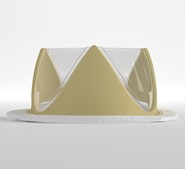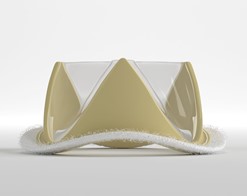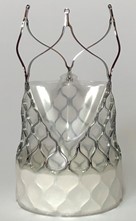By Steven J. Yakubov, MD, and Steven B. Duff, MD, from OhioHealth Physician Group in Columbus
STS News, Summer 2022 — Valve replacement technology has focused on solving the challenges of lifetime durability, excellent hemodynamic performance that is persistent, avoidance of anticoagulation, and providing access to coronary arteries.
Approximately 80% of surgical valve implants (SAVR) are bioprosthetic valves, despite the concerns of long-term durability. Since the advent of transcatheter aortic valve technology (TAVR), some of the durability concerns are lessened due to the availability of TAVR in SAVR.
Newer designs in surgical bioprostheses have focused on the ability to enlarge the aortic surgical valve at the time of TAVR in SAVR, as well as newer leaflet treatment techniques to enhance durability of the initial implant. Surgical techniques to enhance hemodynamics have concentrated mostly on root enlargement techniques to allow for implantation of larger surgical valves, thus minimizing the chance of patient prosthesis mismatch and allowing best possible residual gradients.
The Tria valve technology is designed to enhance durability and hemodynamic performance of aortic valve replacement. The Tria valve is composed of polymer leaflet technology using proprietary biomedicalgrade siloxane-based polyurethane-urea—LifePolymer (LP) from Foldax, Inc. LP has undergone extensive in vitro and in vivo testing.

Surgical aortic valve prosthesis
The aortic valve is composed of three flexible LP leaflets solution-cast onto a radiovisible polyether-ether ketone stent with a polytetrafluoroethylene felt sewing ring. This is performed using a robotic manufacturing process, which is highly precise and obviates the need for direct human contact. The valve is prepared in a dry state and requires no preparation prior to implantation.
The initial surgical experience or early feasibility was performed as a single-armed clinical study in patients with severe, symptomatic aortic valve disease, evaluating 15 patients at five clinical centers. This demonstrated excellent and sustained outcomes with regard to effective orifice area and hemodynamics, transvalvular gradients, and improvements in New York Heart Association functional classification with a 1-year follow-up. Two postoperative deaths (60 and 90 days) resulted, one related to an unplanned surgery on a renal carcinoma and another not well defined.

Surgical mitral valve prosthesis
One patient experienced coronary thrombosis at day 92 with thrombus possibly related to the valve sewing ring. The specific leaflet design with linear closure and diastolic inward flexion of commissural posts contribute to the excellent hemodynamics.
The early experience was continued for a total enrollment of 40 patients, the results of which are not yet available. An early feasibility surgical aortic valve study has begun in India. An early feasibility study with a surgical mitral valve is underway in the US.
The latest iteration of polymer leaflet technology is the development of a transcatheter aortic valve replacement system. This consists of a nitinol frame designed for accommodation to coronary reaccess and a suprannular leaflet design for optimization of hemodynamic performance. The initial experience with this valve system consists of implantation in six ovine subjects for assessment of feasibility.

TAVR prosthesis
Long-term outcomes with polymer-based leaflet technology, including freedom from anticoagulation and leaflet tearing, will not be known for many years. However, it holds the promise of durability without anticoagulation and hemodynamic performance comparable to transcatheter valve technology.
These ideas, as well as improvements in supply chain/production (i.e., fully robotic production and no need for animal products) hold tremendous promise for the advancement of valve replacement technology